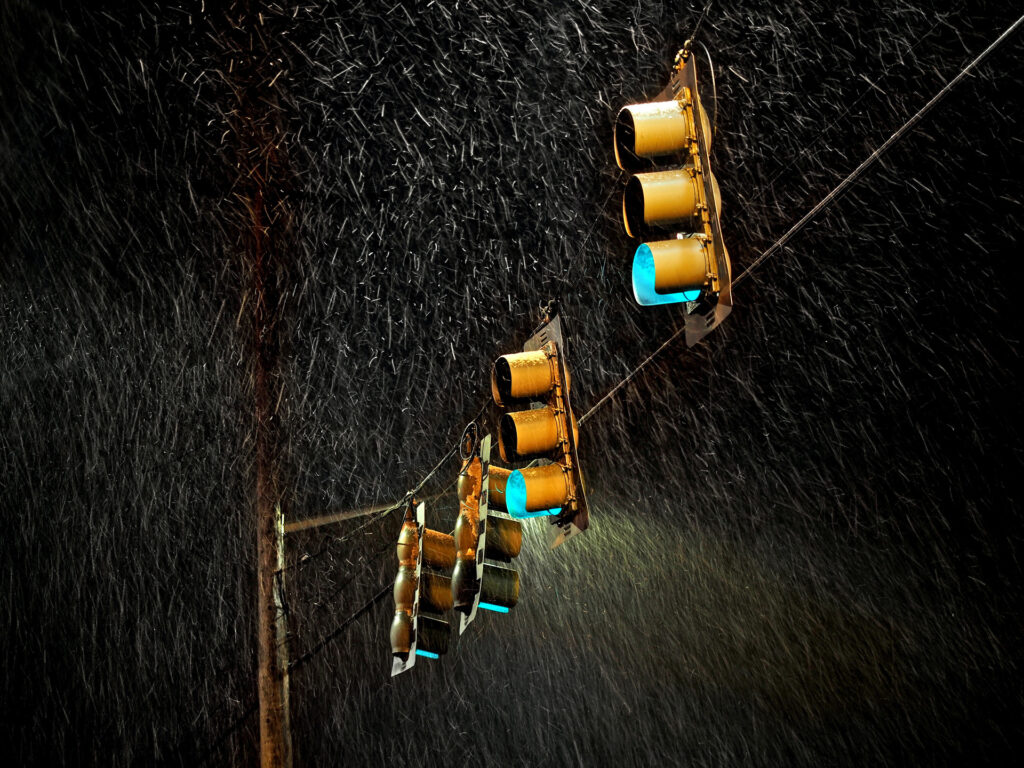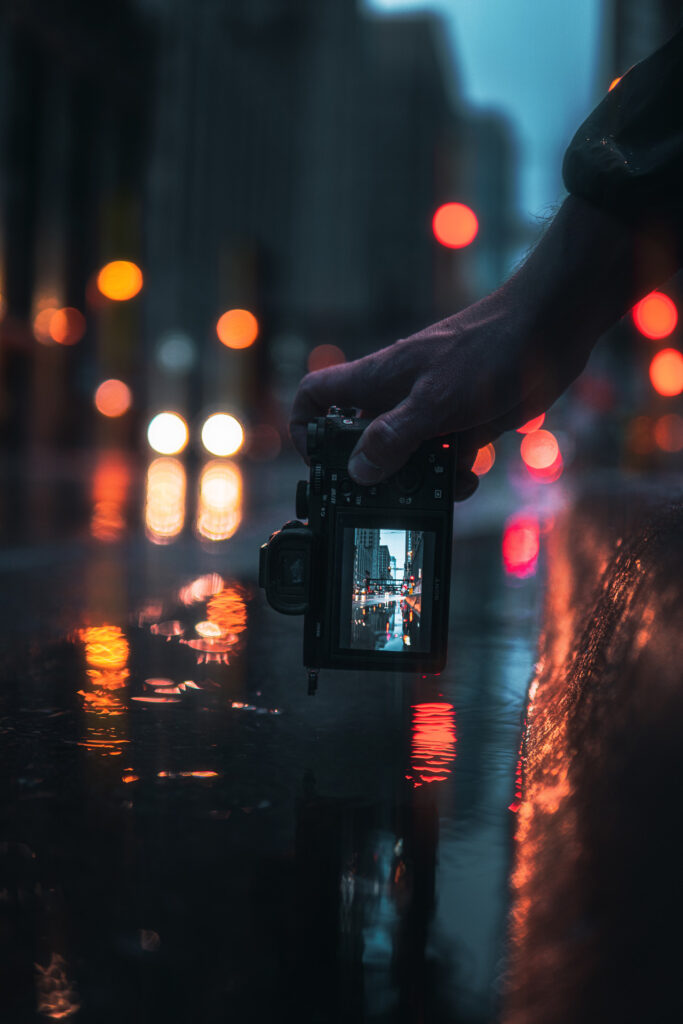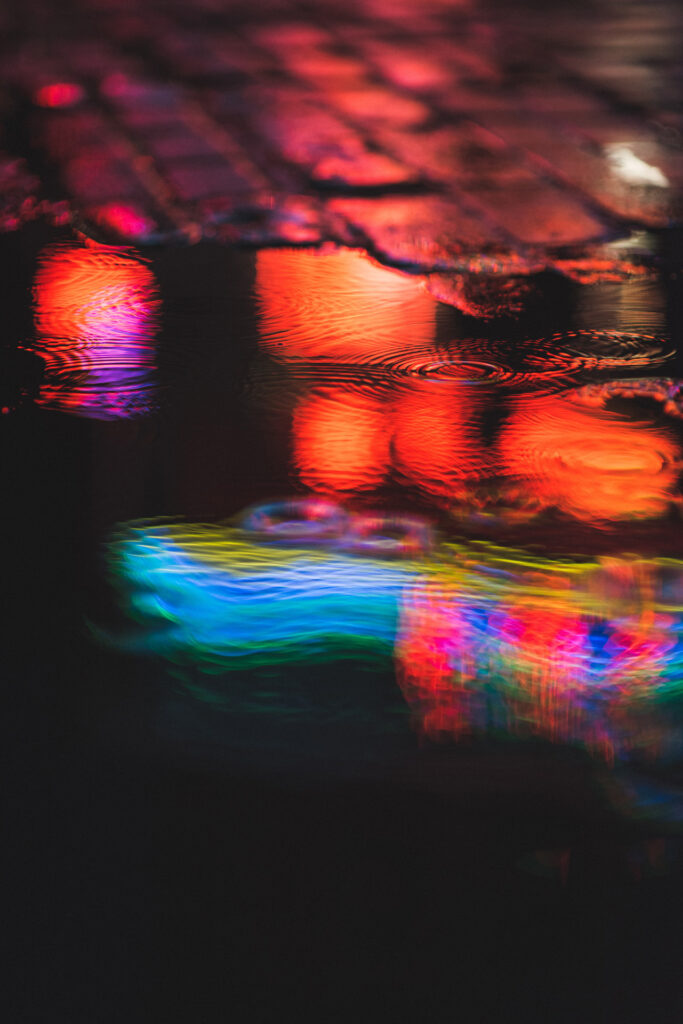You’ve probably been through with the traditional rainy season rituals—curling up with a good book and enjoying a steaming mug of hot chocolate. So why don’t you try something different? Like taking your kids to the park or an outdoor picnic. You’ll want to take pictures to preserve your great time, right? How about street photography in the rain? But taking good photos in the rain can be tricky. So we recommend hiring a professional family photographer who can capture your fun time perfectly!
But if you want to do it yourself, here’s how you can take great pictures in the rain:
Plan Your Day
If there’s a prediction for rain, plan your day accordingly. Decide on a location you’ll want to go to. Your family photographer may have some suggestions for you. You can brainstorm and discuss what type of activities you’d like to do with your family.
You can also pre-plan a theme you’d want to follow for your family, such as matching outfits, handling props, etc.
Choose a Safe Location
We recommend you avoid locations such as hilly areas, rocky tracks, etc., where the terrain is uneven. These places carry an increased risk of injuries like falling, slipping, and others on a rainy day.
Spots such as fields, meadows, parks, etc., are good options as they have level ground.
Pack Your Essentials
If you’re traveling quite often, you should pack items such as raincoats, jackets, socks, etc., to keep warm before and after the photo shoot.
It would help if you also kept an extra change of clothes, especially for your children.
You should keep first aid materials like band-aids, alcohol wipes, etc. Pack healthy snacks for your family because you wouldn’t want cranky children in the photos!
Ensure Driving Safety
Make sure your car doesn’t need major work when it’s time for rain photography. Check your tires for air and flats, and keep a spare one in your vehicle in emergencies. You should also have a car tool kit, such as a jack, spanners, etc., so you wouldn’t need to wait for a mechanic to make their way over to fix your car.
Also, ensure your seatbelts and baby car seats are installed and working smoothly before hitting the road.

Think Outside The Box
The best pictures are the ones taken from different angles and in interesting locations. You can try to be creative with your shots by taking photos from different perspectives. For example, you can lie on the ground and take a picture of your children playing in the rain. You can also try taking close-up shots of raindrops on leaves or flowers.
If you are still struggling to pick your first shot, search the internet for inspiring ideas. Look for some famous rain photographers and look at their works. Analyze what made their pictures so great, and try incorporating those techniques into your photography.
Use The Right Settings for Rain Photography

If you’re using a DSLR camera for rain photography, set it to shutter priority mode to control the shutter speed. A faster shutter speed will help you capture moving objects without blurring them.
We recommend setting the shutter speed to 1/500s or 1/1000s.
If you’re using a phone camera, you can try increasing the ISO to make the camera more sensitive to light. This will help you take more explicit pictures in low-light conditions. You can find more details here about how to take rain photos using phone.
Protect Your Camera Gear
Besides mounting a lens hood, you can keep your camera and lenses dry by using a rain cover or an umbrella. If you’re using a DSLR, we recommend using a camera bag to protect your gear from the rain, especially in heavy rain. Your cover should be easily accessible, so you can cover equipment as soon as you see storm clouds approaching.
Note: You can also use a ziplock bag to keep your phone dry while taking photos.
You can use standard kitchen garbage bags as excellent and low-cost protection for your DSLR camera and lenses when working in the rain. However, if you are caught in a storm and your camera is not weather-sealed, consider using a plastic bag as a temporary measure to keep your gear dry.
How do you take pictures in the rain without getting your phone wet?
Don’t let your camera get wet if you’re caught in a downpour. Instead, invest in a waterproof camera case, like the ones made by Aquatech, so you can continue your work in the rain. Waterproof cases protect your camera from the elements, whether you’re shooting on a beach or in the middle of a storm.

Get creative with your shots – try taking pictures from different angles or in interesting locations.
The rain can provide a great opportunity to get creative with your photography. Look for interesting subjects to photograph, and experiment with different angles and perspectives.
Try shooting from high up or down low, or get close to your subject for an intimate shot. The possibilities are endless – let your imagination run wild! Getting caught in the rain can be a great adventure, so make the most of it and enjoy yourself. After all, that’s what photography is all about!
Experiment with lightening techniques to create moody and atmospheric photos
One way to create moody and atmospheric photos on a rainy day is to experiment with lighting techniques. This can be done by using a slower shutter speed, which will capture the movement of the raindrops and create a sense of atmosphere. Alternatively, you could try using a flash to freeze the raindrops and create a more dramatic effect.
Another way to create atmospheric rain photos is to experiment with different compositions. For example, try framing your shots so that the rain appears falling into the frame, or focus on a single raindrop to create a sense of scale. And don’t forget about reflections! Capturing raindrops on puddles or other surfaces can create beautiful photos in the rain.

Shoot in black and white for a classic look
There’s something about photography in black and white that screams “classic.” Maybe it’s the timelessness of the look, or perhaps it’s the way black and white photography can make a scene pop.
Whatever the reason, if you’re looking to take some genuinely classic rain photos, black and white is the way to go.
Tip: Converting your photos to black and white is easy in most photo editing software. Just open up the image you want to convert, go to the “Edit” tab (or whatever tab houses the color settings), and click on “Black and White.”
Now, there are a few things to keep in mind when shooting in black and white. First, contrast is key. You want to ensure that there’s a good amount of contrast between the light and dark areas of your photo.
- Your black and white photo will look flat and boring if everything is too evenly lit. But if there’s too much contrast, it can look overwhelming and chaotic.
- The best way to find the perfect balance is to experiment a bit. Take a few photos with different lighting setups and see which one looks best in black and white.
- Another thing to remember is that black and white photos can be very striking, but they can also be very delicate. Because there’s no color to distract the eye, every little detail in a black and white photo is amplified.
- So if your subject is not perfectly in focus, or if there’s any kind of camera shake, it will be very noticeable in a black and white photo.
- That’s why it’s important to ensure your camera is steady when you’re shooting in black and white. Use a tripod if you can, or lean against a wall or something else to steady your hands.
- Finally, don’t be afraid to experiment with different techniques. Black and white photography is a great way to get creative with your shots.
Try long exposures for blurred raindrops, or play around with lighting to create different effects. There are no rules in black-and-white photography, so have fun and see what you can come up with!
Capture reflections
Rain deposited on street surfaces creates beautiful reflection. What makes reflection great for me is that there is always the possibility to show two distinct perspectives. First, the textures are on the ground. Building shape shapes & forms appear behind them. Using different perspectives is very important. You can look for those reflections when the rain clouds disappear, and the streets are still covered with rain puddles.
Try to photograph reflections at a flipped angle. Rain provides a perfect backdrop for a high-down shot. Reflections about how water can change the world. The water acts as a reflection and creates collage-like properties. This picture is in the same place.
Freeze Raindrops
Rain moves very quickly and is often portrayed in the photo with a small blurry effect. These tiny smudges of color and texture serve secondary subjects. If we use a fast shutter speed, we can increase the importance of falling rain drops. Long shutter speeds allow for blurring the movement of the object. With an ultra-high shutter speed, your motions will not occur.
Shooting rain can produce lesser light conditions. Never forget to increase ISO or adjust the apertures for accurate photography as well as for capturing a dramatic image. Falling rains become heavier, almost glass-like, with specific shapes and forms.
Watch for special, photogenic conditions.
I find rainy days extremely exciting and can also bring on other conditions that improve photography – sometimes very spectacularly! For example, a small or dry waterfall can be fully functional and beautiful during or after rainfall. Autumn colors will become heavily saturated, and rocks and earth, which normally looked dull, will now have a new richness.
Driving in the higher elevations on rainy days may leave engulfing fog-like environments laden with atmospheric atmosphere. However, I keep checking for rainbows or lightning and the possibility of rain turning into snowfall.
Incorporate shapes and forms for an unusual composition
For many people, shape and form are essential components, and it is the simplest tool to make a composition. Unlike abstract rain photography, rain should also be taken into consideration. The idea of seeing the scene differently or from different angles may lead to something creative.
Bring your mind towards the drops to change the way they look. Give them a larger part of their frame to create interesting shapes and forms. It is possible to capture reflections in their surroundings using macro lenses.

Use a golf umbrella.
I choose a large golf umbrella to take photos in the rain rather than my usual smaller umbrella. The golf umbrella is big enough to keep you and your equipment dry and usually withstands wind more easily. I used clamps to attach to the frame of an umbrella in the past. I have found it hard: Any wind sends a vibration to the open umbrella and causes softening at many typical shutter speeds. There are also chances if the wind is strong enough to knock the tripod out quickly.
Use a Weather App to Track Storms
You have an awesome gadget at home if you need to take photos when the rain is coming. The best weather apps let you see satellite images with animations showing projected clouds. In addition, the newest default weather app for iPhones sometimes shows an estimated time when the rain will stop, and the lull starts. Knowing where storms go can improve your shooting possibilities. Here are the best photo apps that offer varying weather-related advice.
Photograph from inside your vehicle
Suppose your desired object is seen from the viewpoint of your vehicle. In that case, it’s possible to photograph from the inside, which will easily keep your equipment dry. The Blue Ridge Parkway can also provide scenic driving that offers over 200 scenic views along its length of 469 miles. One rainy night, I thought I had finished my film when darkness came. Then, I saw the composition of the raindrops sweeping down the mountainside blanketed in autumn colors.
Use Condensation for Soft Focus
When it rains and colds out, it is possible to be sure it’s warm inside. It also causes condensation on everything glassed. It also enhances the photography of street scenes. You now have Milky mystery scenes!
You might find your subject more focused, and you might hide its identity of it. You’ll get amazing results in shapes, forms, and colors. Choose the autofocus settings carefully, or you may manually focus using Focus Peak.
Minimize Lens Changes in the Rain

When taking pictures in the rain, you usually keep your photograph bag in your car and only bring a single camera to the elements. The first step is to choose the right lens for you. Zoom lenses are excellent in this case. Depending on your location, you can probably use 24-70mm, 70-200mm, or whatever range is needed. The 28 mm zoom could be excellent, particularly if its surface withstands relatively low moisture levels.
If you decide to do some macro photography and take some macro photos, try using a 100 mm or 135 mm lens. If you are using a tripod, use a prime lens. If your subject is close, you might want to add extension tubes to your camera.
Edit Your Pictures
After taking the pictures, you can edit them to make them look even better. There are many photo editing apps available that can help you with this. We recommend using Adobe Lightroom or Snapseed.
With these apps, you can make minor adjustments to your pictures, such as increasing the contrast or brightness. In addition, you will edit your rainy day photos like any other pictures or even use some of your favorite presets.
You can also use these apps to remove any blemishes or imperfections from the pictures.
Optimize Your Post-Processing Process
When you take photos during the rain, the images will appear drab and lack color and punch. So you might like to compensate for this by increasing the saturation and vibrance. You can also increase the contrast to make the colors pop. To give your photos a more vintage look, you can try desaturating them slightly and adding a bit of grain.
In addition, you can add more contrast, clarity, and vibrancy to the normal workflows, which helps when the rain has provided a flatter image.
It’s better to shoot with a RAW format rather than with JPEG to give your post processing the greatest flexibility possible. For example, the rainy day images might sometimes encourage your pursuit of the misty atmosphere to change color to black and white.
To Recap:
Photography in the rain can be tricky, but with a little preparation and know-how, you can get some truly stunning shots. Here are a few tips to help you take great pictures in the rain:
- Protect your gear. Make sure your camera and lens are properly protected from the elements. If possible, use a rain cover or an umbrella to keep them dry.
- Use a slow shutter speed. Raindrops falling through the air can make for some beautiful streaks of light. To capture this effect, use a slow shutter speed (around 1/15th of a second or slower).
- Try different angles and perspectives. Don’t be afraid to experiment with different angles and perspectives. Sometimes the most interesting shots are the ones that are a bit out of the ordinary.
- Embrace the rain. Don’t let a little rain stop you from getting some great photos. Embrace the wet weather and have fun with it!
With these tips in mind, experiment with taking pictures in the rain. You may just be surprised at how beautiful the results can be.
Have Fun!
Your family photography session is meant for you to enjoy one another’s company and be grateful for the meaning you bring to one another’s lives. The photographer seeks moments where you’re in your element, carefree and loved, and makes the most out of them.
Don’t be afraid to get down in the mud and play with your kids! You can do your laundry when you get back together too. You can take great pictures in the rain with a little experimentation! So next time there’s a downpour, don’t hide indoors – get out there and start shooting!
Using some of the techniques mentioned here, you can also ask your photographer to capture rainy photos in the studio’s comfort. Then, with little editing tricks, you can have amazing photos.
If you’re looking for a reliable family photographer near Coquitlam, BC, contact Artin Photography. They have over twenty years of experience with newborn and maternity photography. They also offer other services like cake smash and family portrait photography. Get in touch with them to find out more about their services.

